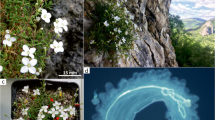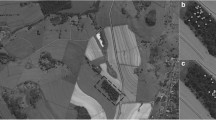Abstract
THE exceptional species diversity of tropical rain forests is well known; of these the lowland forests of the Malay Peninsula are among the richest1. This, and the size of the trees, pose obvious difficulties for the maintenance of pan-mixis, and tempt speculation on the processes by which such diversity has evolved and may now be favoured. Fedorov2 suggested that natural selection is low and self-pollination prevalent, favouring random genetic drift. Prevalence of random drift, or apomixis—agamospermy—would contradict Ashton's3 view that, given a stable environment, evolution proceeds through ecotypic differentiation while diversity accrues through ever increasing niche specialisation; for this view to be correct, maintenance of genetic variability within breeding groups would be essential. Solid evidence has been meagre but there is evidence4 that genetic polymorphism, and hence heterozygosity, is common in the emergent tree Shorea leprosula Miq., and Xerospermum intermedium Radlk., an undeirstorey species. The pattern of spatial variation is consistent with the view that these species are outbreeders in which predominantly short-range pollen and fruit dispersal are accompanied by short-range heterogeneity in gene frequencies. However, both are common trees with minimal spatial isolation. We now report the occurrence of apomixis in some other rain forest trees.
Similar content being viewed by others
References
Whitmore, T. C. Tropical Rain Forests of the Far East (Oxford University Press Oxford, 1975).
Fedorov, A. A. J. Ecol. 54, 1 (1966).
Ashton, P. S. Biol. J. Linn. Soc. 1, 155 (1969).
Yap, Y. Y., Robertson, F. W., Ashton, P. S., Soepadmo, E. & Lee, D. W. Nature 269, 323 (1977).
Purseglove, J. W. Tropical Crops: Dicotyledons. (Longman, London, 1975.)
Treub, M. Ann. Jard. bot. Buitenz. 24, 1 (1911).
Horn, C. L. Science 92, 237 (1940).
Bernardo, F. A., Jesena, C C. & Ramirez, C. C. Philip. Agric. Rev. 44, 8, 415 (1961).
Jong, K. in Tropical Trees: Variation, Breeding and Conservation (eds Burley, J. & Styles, B. T.), 79 (London and New York, 1976).
Jong, K. & Lethbridge, A. Notes R. Bot. Gdn Edin. 27, 2, 175 (1967).
Maury, G. Bull. Soc. Hist. nat. Toulouse 104, 1–2, 187 (1968); ibid 106, 282 (1970).
Foxworthy, F. W. Mal. For. Rec. 10 (1932).
Maury, G. Bull. Soc. Hist. nat. Toulouse 106, 277 (1970).
Maguire, B. Taxon 25, 241 (1976).
Ashton, P. & Ashton, M. (eds) Univ. Hull Dept Geog. Misc. Ser. 13, 121 (1972).
Dobzhansky, T. Am. Sci. 38, 209 (1950).
Author information
Authors and Affiliations
Rights and permissions
About this article
Cite this article
KAUR, A., HA, C., JONG, K. et al. Apomixis may be widespread among trees of the climax rain forest. Nature 271, 440–442 (1978). https://doi.org/10.1038/271440a0
Received:
Accepted:
Issue Date:
DOI: https://doi.org/10.1038/271440a0
- Springer Nature Limited
This article is cited by
-
Regeneration characteristics of Garcinia pedunculata: utilization of adventitious embryony for mass multiplication
Plant Cell, Tissue and Organ Culture (PCTOC) (2023)
-
Genetic structure of an important widely distributed tropical forest tree, Shorea parvifolia, in Southeast Asia
Tree Genetics & Genomes (2021)
-
The magnificent Dipterocarps: précis for an Epitaph?
Kew Bulletin (2021)
-
The genome of Shorea leprosula (Dipterocarpaceae) highlights the ecological relevance of drought in aseasonal tropical rainforests
Communications Biology (2021)
-
New evidence on the origin of mangosteen (Garcinia mangostana L.) based on morphology and ITS sequence
Genetic Resources and Crop Evolution (2014)





